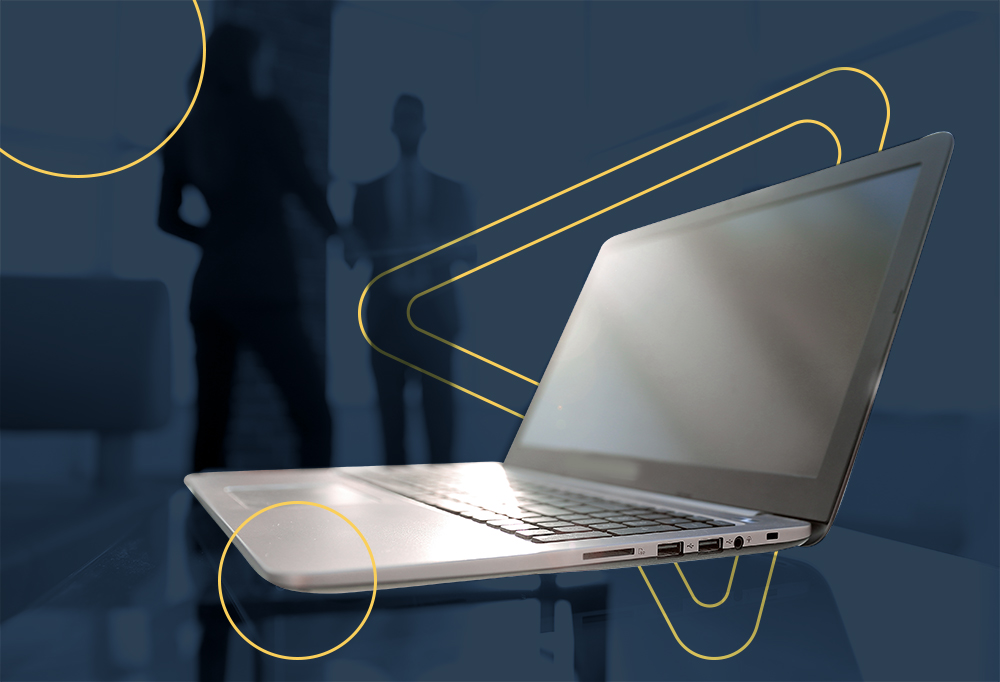
Every year consumers and businesses are anticipating and are excited about technology trends, and this 2024, is no exception. The rapid development of technology such as AI, Augmented, Virtual Reality, and more powerful computing capabilities is what makes the technology trends this 2024 exciting. Whether you’re a business that is closely monitoring upcoming tech trends to capitalize on new opportunities and breakthroughs, or a consumer that is anticipating what’s up for grabs for this year’s innovation, we will discuss technology trends this 2024 to provide insights into what the future holds in store.
First Human with Brain Chip Implant from Neuralink
“The first human received an implant from @Neuralink yesterday and is recovering well.
Initial results show promising neuron spike detection.”
An announcement by Elon Musk on his X (Twitter) account.
BCI technology is definitely an uncharted territory for humans and technology. And as expected, we get a mix of responses from people at X (Twitter).
While others responded on a serious and terrified note:
Well, others responded with humor with memes:
Neuralink’s Brain-Computer Interface or BCI, could aid individuals to improve their lives. Their mission: “Create a generalized brain interface to restore autonomy to those with unmet medical needs today and unlock human potential tomorrow.”
Right now, Neuralink is focused on giving people with quadriplegia the ability to control their computers and devices with their thoughts, while having safety, accessibility, and reliability.
The next goal that Neuralink is aiming to achieve is to restore the capabilities of vision-impaired, motor-dysfunction and speech-impaired individuals and expand assistive technology.
It’s amazing yet terrifying to think that humans can be implanted with Brain Chips at this age of technology. But we will still have to see how the first human will recover, take advantage of the BCI technology, and if the implant is a success. Furthermore, we have yet to see what the future holds for this type of technology.
Generative AI
Generative AI holds the promise of revolutionizing various industries such as art and design, healthcare and finance. However, like any powerful tool, it comes with its own set of benefits and disadvantages.
As we embrace the benefits of Generative AI, we must utilize Generative AI accordingly and rightfully, mindful of the biases it may perpetuate.
Generative AI emerges as a powerful tool for creativity and efficiency that helps streamline processes with automation capabilities which serves a potent helping-hand for creatives. Tools like Midjourney can assist graphic designers in producing life-like images in a matter of seconds, rather than scrolling through stock images for hours.
However, amidst the creative potential it can produce can lead to misuse. The outbreak for malicious exploitation of Generative AI raises concerns is widespread in social media. A recent example of this disadvantage is the generative images of Taylor Swift circulating on X (Twitter), which has caught the attention of Government officials to take action against the malicious use of generative AI.
Internet of Things (IoT)
The Internet of Things (IoT) connects the world, one device at a time. IoT refers to the network of interconnected devices, objects, and systems that communicate and share data with each other over the internet.
These devices, equipped with sensors, actuators, and connectivity features, can collect and exchange data, enabling them to interact with their environment and perform various tasks autonomously.
Essentially, IoT extends internet connectivity beyond traditional computing devices like computers and smartphones to a diverse range of everyday objects, such as home appliances, wearable devices, vehicles, and industrial equipment. This interconnected ecosystem enables greater efficiency, automation, and insights across various sectors, leading to smarter homes, cities, industries, and more personalized user experiences.
In 2024, the trajectory of Internet of Things (IoT) technology focused on privacy, security, and healthcare.
- Privacy
With the growth of IoT devices in homes, workplaces, and public spaces, concerns about data privacy have come to the forefront. In response, the focus is shifting towards enhancing privacy protections for users. This includes implementing robust data encryption protocols, anonymizing personal information, and providing users with greater control over their data through transparent privacy policies and user-friendly consent mechanisms.
- Security
As IoT devices become increasingly interconnected and integrated into critical infrastructure, ensuring cybersecurity becoming more important The trend in 2024 is towards adopting proactive security measures, such as implementing strict authentication mechanisms, regularly updating device firmware to patch vulnerabilities, and leveraging AI-driven threat detection systems to safeguard against cyber attacks and unauthorized access.
- Healthcare
IoT technology is poised to revolutionize patient care and medical services delivery. From remote patient monitoring and telemedicine to smart medical devices and personalized treatment plans, the focus in 2024 is on leveraging IoT to improve healthcare outcomes, enhance patient experiences, and optimize resource utilization.
However, alongside these advancements comes a heightened emphasis on ensuring the security and privacy of sensitive health data, with stringent regulatory frameworks and industry standards guiding the development and deployment of IoT solutions in healthcare settings.
Quantum Computing
Quantum computing this 2024 has taken progress and is focused on taking strides in the niche of post-quantum cryptography.
Quantum computing, in its essence, uses a powerful computing tool called “qubits” that can solve problems much faster than regular bit computers.
Imagine this, a regular computer can only solve 1 puzzle at a time, while quantum computing can solve 2 puzzles at the same time.
Going back, this emerging technology trend this 2024 has garnered attention as researchers and practitioners race to develop classic cryptographic techniques capable of withstanding the computational power of quantum computers.
Post-quantum cryptography is a branch of cryptography specifically designed to resist attacks from quantum computers.
Another technology trend to watch out for in 2024 is the development of quantum networking, which is expected to advance significantly in the next 4 to 5 years. Quantum networking facilitates communication and collaboration among quantum computers, paving the way for more scalable and efficient quantum solutions.
Augmented Reality
Have you seen the Apple Vision Pro that most tech enthusiasts on social media rave about? Yes, that is Augmented Reality.
Technically, Augmented Reality allows you to blend technology with your environment. Just like the Augma headset from Sword Art Online the Movie.
The Apple Vision Pro is a on-head device that allows you to fully immerse yourself in technology while using your environment as your canvas. This device can be used at home, at an office, or outdoors; if you don’t mind wearing this device outside.
From this device, you can use this device for applications, workspace, safari, and even view photos and videos. This device also allows you to transform your surroundings into your personal ultimate theater and view movies at 4K resolution for eye-stunning visuals. You don’t even need a projector and a white vinyl screen, just this device and popcorn!
While augmented reality is significantly new to the technology trends, we can expect far greater innovation and improvements as the years go by.
More Powerful Computing Hardware
Computer parts companies such as Intel, NVIDIA, and Ryzen also has taken part on the technology trends this 2024, which they have kept consumers anticipating and excited about their new releases of their hardware this 2024.
According to Ryzen’s roadmap, their 8000 series processor will be released this 2024. The 8000 series processor will feature a new Zen 5 chip and Navi 3.5 technology, which is expected to be equipped with 16+ cores, but that is all just speculation until Ryzen decides to finally release their most-anticipated, newest processor.
As for NVIDIA, no news yet on the exact release date of their RTX 50-Series (the predecessor for the RTX 40-Series) but it was unveiled to be released at the end of 2024 or the beginning of 2025.
As for Intel, they have announced their Intel Core 14th Gen at CES 2024, which introduces a new series of processors for gamers, creators, and professionals to experience more computing power for their desktops. More importantly, Intel also introduced the Intel Core i9-14900HX, featuring eight Performance-cores (P-cores) and 16 Efficient-cores (E-cores).
Another important part of this announcement is the unveiling of the Intel Core 14th Gen HX-series mobile processors to cater gamers, creators and professionals who need the highest levels of compute performance and require the mobility that a laptop provides.
Conclusion
While we anticipate the results of the first ever human with BCI, the balance in the use of Generative AI, the improvement for IoT, the progress of Quantum Computing, the consumer accessibility of Augmented Reality, and upcoming powerful computer hardware, it is safe to say that we’re in a journey of amazing technological trends this 2024.
Some of these innovations still need a lot of study, especially the BCI – which stirred mixed response from the public, and the regulations of Generative AI for it to be perfect.
Despite the challenges, the potential of these technology trends are vast and promising once it has fully matured. As we embrace the opportunities of these technologies, it’s essential to maintain a balance between innovation and responsibility, ensuring that the future we’re building is one that prioritizes the safety, well-being, and empowerment of all individuals.










